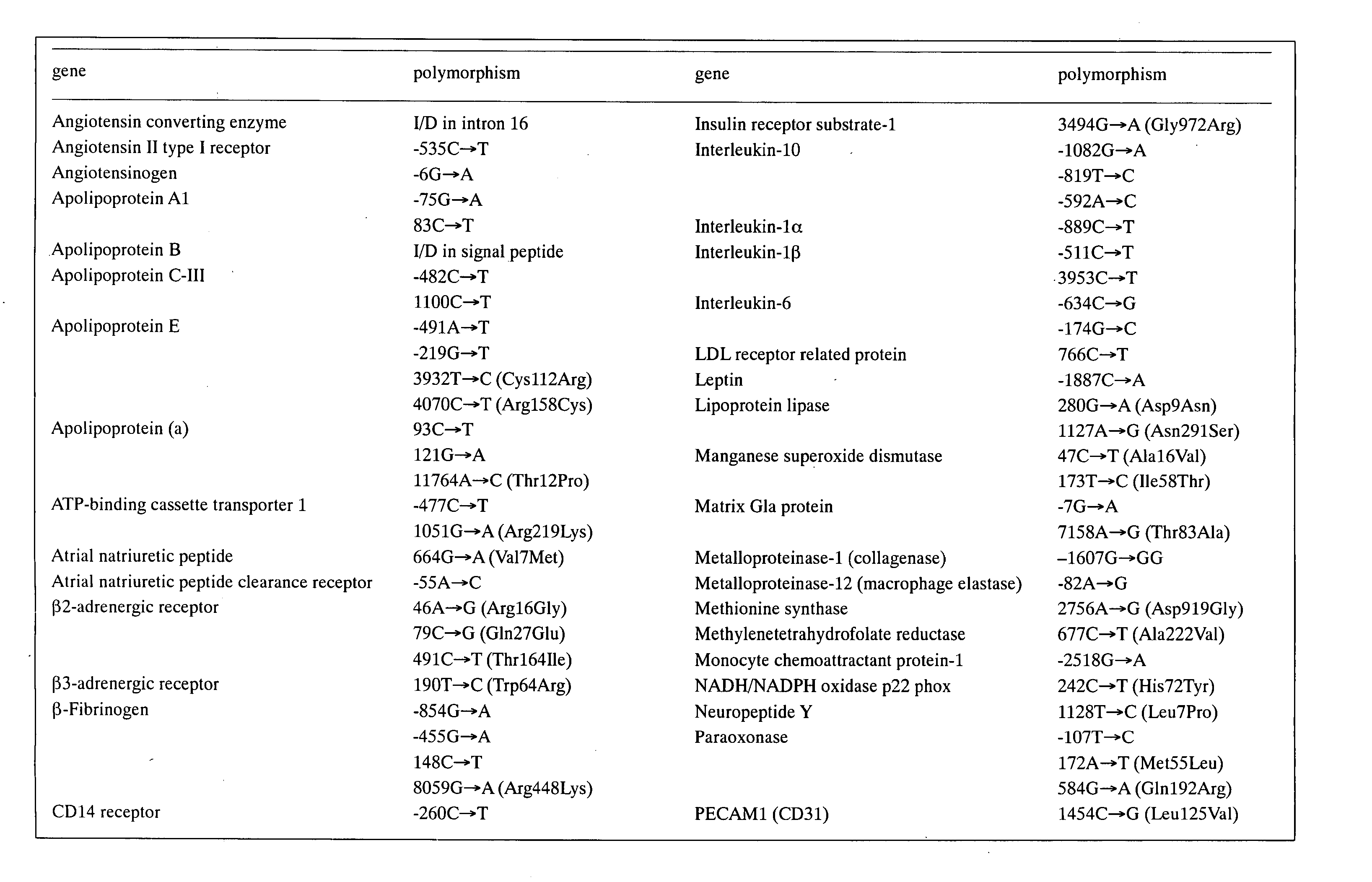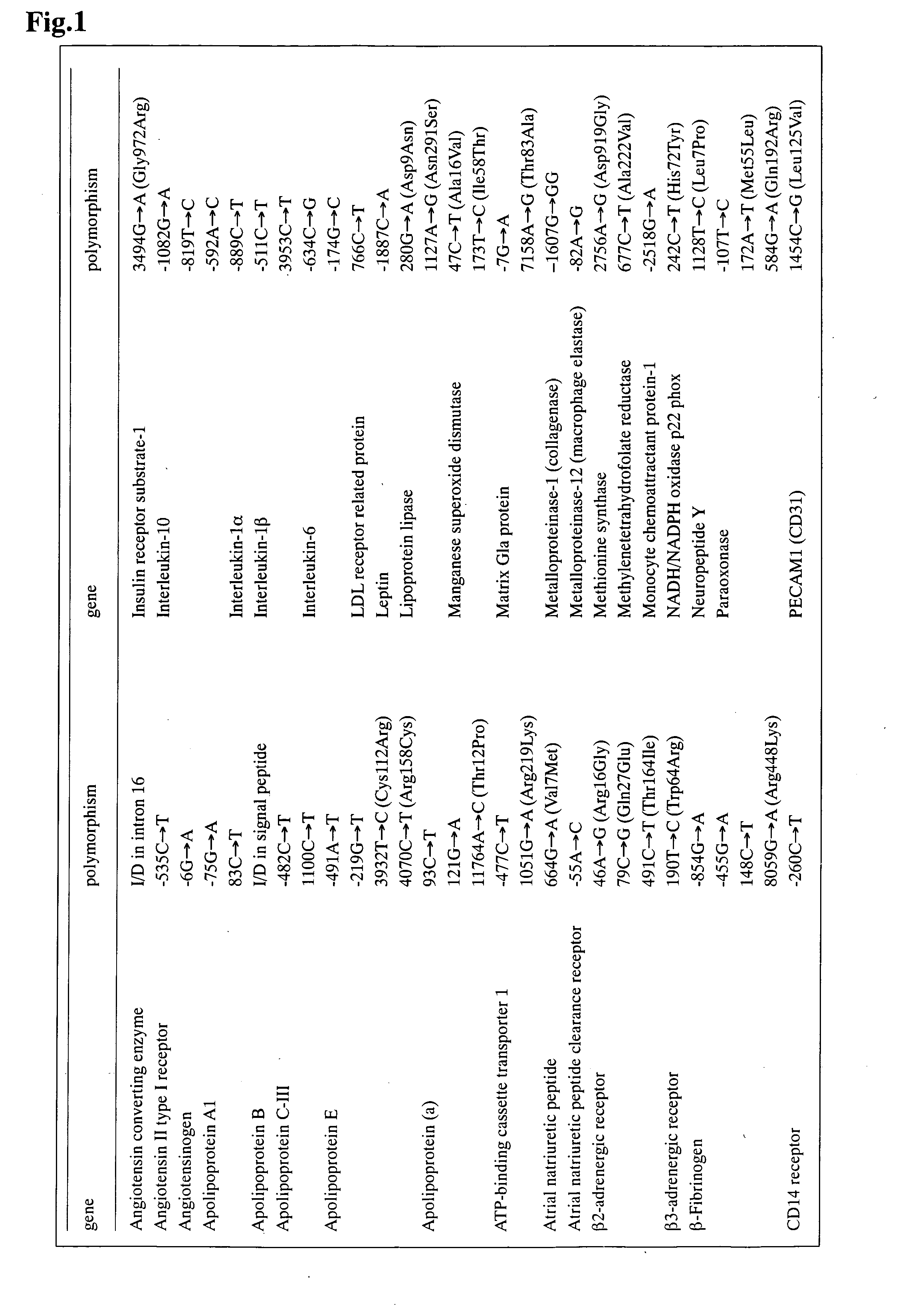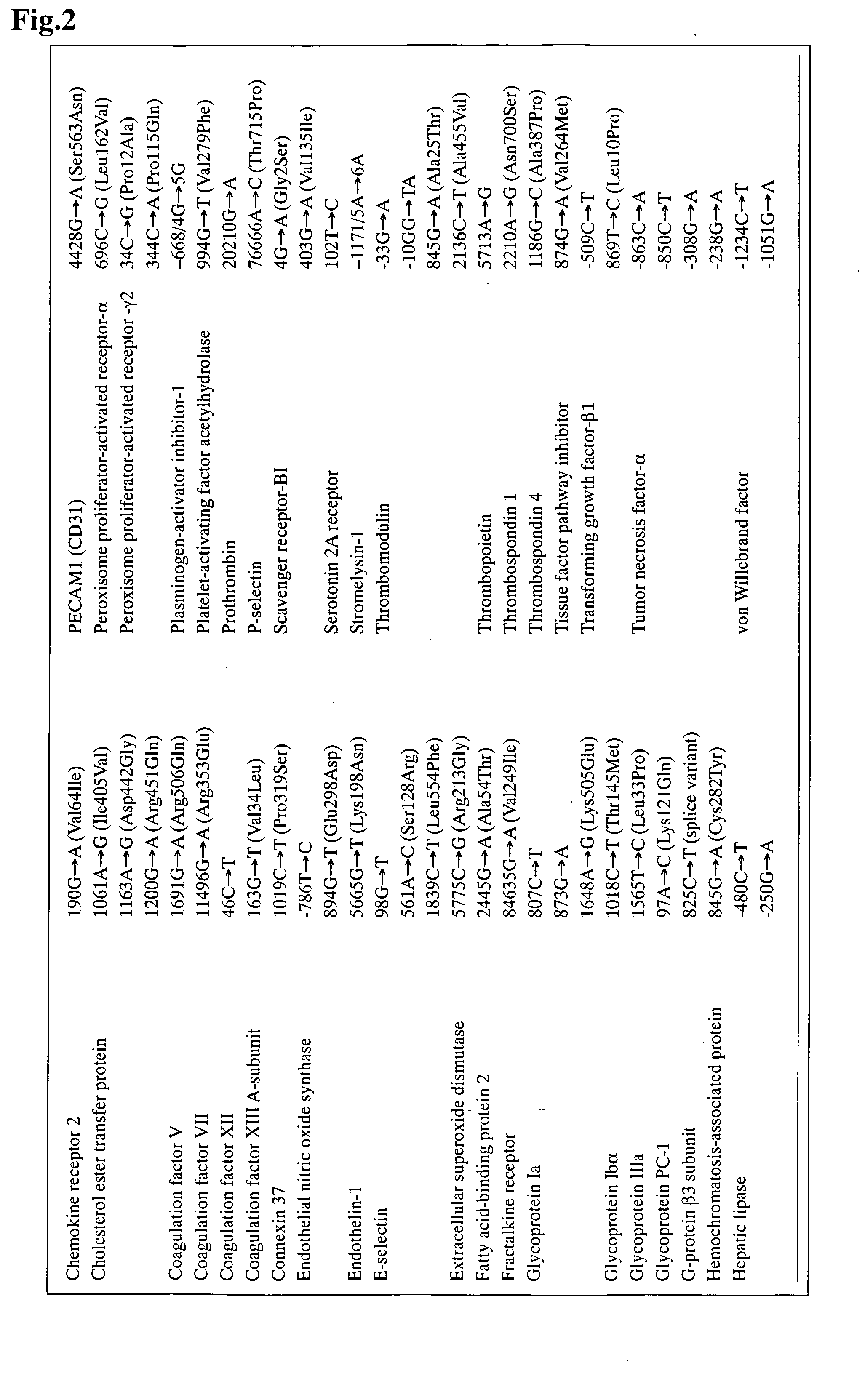Method of diagnosing risk of myocardial infarction
a genetic risk and myocardial infarction technology, applied in the field of diagnostic methods of myocardial infarction risk, can solve the problems of insufficient subjects in many studies, low relative risk (odds ratio), and many studies that have not reached a certain finding in terms of significance, etc., and achieve high predictability, high accuracy, and the effect of genetic risk of myocardial infarction
- Summary
- Abstract
- Description
- Claims
- Application Information
AI Technical Summary
Benefits of technology
Problems solved by technology
Method used
Image
Examples
example 1
Selection of Gene Polymorphism
[0255] By using several kinds of common databases including PubMed [National Center for Biological Information (NCBI)], Online Mendelian inheritance in Men (NCBI), Single Nucleotide Polymorphism (NCBI), etc., from a comprehensive viewpoint including vascular biology, platelet-leucocyte biology, congealing fibrinogenolysis system, a metabolic factor such as lipid, sugar, etc., 71 genes which were estimated to be associated with coronary arteriosclerosis, coronary artery spasm, hypertension, diabetes, hyperlipidemia, etc. were extracted from genes which had been previously reported. Furthermore, in the polymorphisms existing in these genes, 112 polymorphisms including polymorphisms which exist in promoter regions or exons, or polymorphisms which were located in splice donor sites or acceptor sites and which were expected to be associated with the functional changes of gene products were selected (FIGS. 1 and 2).
example 2
Determination of Gene Polymorphism
[0256] Subjects were 5061 Japanese males and females (3309 males and 1752 females) who visited as outpatients or were hospitalized in 15 participating institutes between July 1994 and December 2001. 2819 subjects (2003 males and 816 females) had myocardial infarction. All subjects were subjected to coronary angiography and left ventriculography. Diagnosis of myocardial infarction was carried out based on electrocardiographic change and increases in serum CK, GOT and LDH. Confirmed diagnosis of myocardial infarction was determined based on abnormality in wall motion in left ventriculography and stenosis of left main coronary artery or major coronary arteries corresponding thereto.
[0257] Controls were 2242 people (1306 males and 936 females) who visited the participating institutes and had at least one of the conventional risk factors of coronary artery diseases, i.e., smoking (10 cigarettes or more per day), obesity (body mass index ≧26 kg / m2), hyp...
example 3
Selection of Polymorphism Associated with Myocardial Infarction and Development of Method for Diagnosing Myocardial Infarction
[0262] Firstly, screening related analyses regarding 71 genes 112 polymorphisms were carried out for 451 males (myocardial infarction: 219, control: 232) and 458 females (myocardial infarction: 226, control: 232). These cases were selected at random from entire 5061 cases.
[0263] Background data of 909 people (451 males and 458 females) subjected to screening related analyses by the above-mentioned method were shown in FIG. 5. In males, no significant difference was found in age, BMI, and frequency of conventional risk factors of coronary artery disease such as smoking, hypertension, diabetes, hypercholesterolemia, hyperuricemia, etc. between myocardial infraction group and control group. In females, no significant difference was found in age, BMI, and frequency of hypercholesterolemia, hyperuricemia, etc. was not found between myocardial infraction group an...
PUM
 Login to View More
Login to View More Abstract
Description
Claims
Application Information
 Login to View More
Login to View More - R&D
- Intellectual Property
- Life Sciences
- Materials
- Tech Scout
- Unparalleled Data Quality
- Higher Quality Content
- 60% Fewer Hallucinations
Browse by: Latest US Patents, China's latest patents, Technical Efficacy Thesaurus, Application Domain, Technology Topic, Popular Technical Reports.
© 2025 PatSnap. All rights reserved.Legal|Privacy policy|Modern Slavery Act Transparency Statement|Sitemap|About US| Contact US: help@patsnap.com



